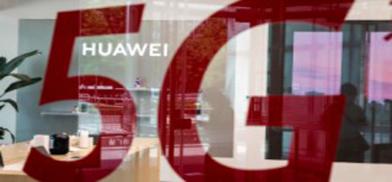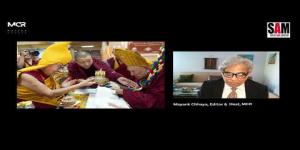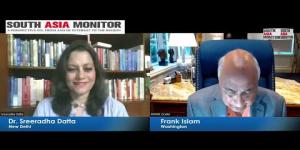Bangladesh lags behind Asia Pacific peers in telecom services: GSMA
In the digital age, Bangladesh's mobile telecom market is still dominated by the second generation (2G) services while scenarios in other Asia Pacific countries are quite different and are predominated by 4G services, according to a GSMA report published on Monday

In the digital age, Bangladesh's mobile telecom market is still dominated by the second generation (2G) services while scenarios in other Asia Pacific countries are quite different and are predominated by 4G services, according to a GSMA report published on Monday.
The 2G technology is the mobile communications standard allowing mostly voice calls, SMS and limited data transmission while 4G is more data driven.
By 2025 Bangladesh will be a data-driven market where 4G service will dominate with a 46 percent share, reads The Groupe Speciale Mobile Association (GSMA) report "The Mobile Economy Asia Pacific 2020".
However, Bangladesh is in a position below the average standard of the Asia Pacific countries in almost all the parameters and the situation will last long ever after five years, the report's data shows.
Senior executives of mobile operators said high tax and regulatory challenges were the main barriers for Bangladesh lagging behind in the table.
"Our regulatory situation is the worst possible in the world and at the same time the government is increasing taxes every year on telecom services which halted new adoptions," said a top executive of a leading mobile carrier of Bangladesh requesting anonymity.
The 2G technology will become obsolete in most of the developed Asia Pacific countries within the next couple of years but till 2025, 18 per cent of Bangladesh's telecommunication customers will be "only" calling users requiring no data access.
The GSMA ran the study in recent years with numbers of 2019 and estimates of 2025.
According to the GSMA, at the end of 2019 about 54 per cent of people in Bangladesh were using mobile phones, of which 25 per cent had internet access.
They estimated that unique user numbers will reach 59 per cent by 2025 and of it 38 per cent will be internet users.
Bangladesh will get 25 million new internet users in these five years, they said.
In 2025, of the total internet users of Bangladesh, only 6 per cent will use 5G while 4G will dominate the market having 46 per cent of the total data users. At that time 3G users will amount to 30 per cent and 18 per cent will still be connected to 2G.
However, at the end of 2019, only 10 per cent of internet users had 4G connections in this market, 40 per cent 3G and half of the mobile phone users just using it for calling purposes.
Apart from Bangladesh, Pakistan is the other country where 2G is still dominating the market. Bangladesh is also the worst in position when it comes to using smartphones, even worse than Pakistan.
Currently smartphone penetration in Bangladesh is only 40 per cent and it will reach 69 per cent after five years, reads the report. In Pakistan smartphone penetration is 46 per cent and it will grow up to 85 per cent by 2025.
Mobile penetration in Bangladesh already reached 100 per cent which is better than India (78 per cent) and Pakistan (76 per cent) and will be ahead of them even in 2025.
But other countries mentioned such as Indonesia, Australia, Japan, Malaysia, Singapore and South Korea are clearly ahead at this point. Ever some of those countries have 150 per cent penetration.
The last five countries mentioned formed a new platform – APAC 5G Forum – which will be leading in this region's 5G services and the report mentioned that there would be no 2G service in those countries in 2025 while 3G will exist only among around 1 per cent of mobile users.
Of that, the Australian and South Korean markets will dominate with 5G and the remaining three would capture a significant share.
Nine markets of this region have already launched commercial mobile 5G services and 12 others have officially announced plans to launch it and Bangladesh is nowhere with regard to that, reads the GSMA report.
Bangladesh Telecommunication Regulatory Commission (BTRC) formed a committee last year to prepare a draft guideline on 5G service and initially planned to launch the 5G service by 2023. However, for the Covid-19 situation all preparations have been halted for months.
About Bangladesh's situation, the GSMA said the 5G opportunity was for a longer term, largely because there was still a lot of room to grow for 4G, which was the dominant mobile technology across Asia Pacific and would remain so for the foreseeable future.
According to the report, about 663 million new people across the region would start using mobile internet by 2025 and a majority of them will come from China (261 million), India (190 million), Pakistan (46 million), Indonesia (44 million) and Bangladesh (25 million).
The report also reads that 6.3 billion new internet of things (IoT) connections will be in Asia Pacific within the next five years, accounting for half of global new additions, with smart homes and buildings being the key growth verticals.
Currently there are 5.2 billion IoT connections in this region.
The Covid-19 pandemic will result in 18 per cent fewer 5G connections in this region than previously expected.
Mobile data traffic consumption was 9.2 GB per subscriber per month which will increase more than threefold to reach 28.9 GB in 2025.
However, according to the top three carriers, the average internet user in Bangladesh is currently consuming about 2 GB of data per month.
https://www.thedailystar.net/business/news/bangladesh-lags-behind-asia-pacific-peers-telecom-services-gsma-1927249









Post a Comment